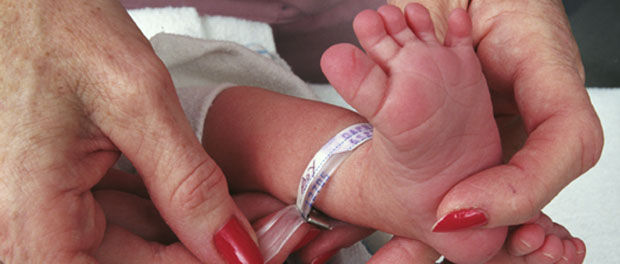 While all of our senses help us to learn and to know about the world, the sense of touch is perhaps the most intimate. Our skin defines our very boundaries as physical persons and is a point of connection to other people, nature, and objects in our world. All of us had fundamental experiences of touch in our receiving nurture as babies: we were held when we were fed, rocked and soothed when upset, and carried around before we were independently mobile. Touch, then, is deeply connected to some of our most basic, core experiences of care.
While all of our senses help us to learn and to know about the world, the sense of touch is perhaps the most intimate. Our skin defines our very boundaries as physical persons and is a point of connection to other people, nature, and objects in our world. All of us had fundamental experiences of touch in our receiving nurture as babies: we were held when we were fed, rocked and soothed when upset, and carried around before we were independently mobile. Touch, then, is deeply connected to some of our most basic, core experiences of care.
As adults, we continue to know love in the hugs of friends, the caress of a lover, or snuggling in with a spouse in the last moments of the day before sleep. But the source of all our many loves is found in God’s love. So it is in a way God too who touches us in these loving moments. Ignatian spirituality emphasizes an incarnational understanding of knowing God in all things. Understanding sensual experiences as a way to know and to experience God’s love for us helps us to allow God to come closer. By reflecting on how various experiences of love known through touch are also experiences of God’s care, we can deepen our sense of God’s love as an intimate and even embodied presence.
I recently returned from my annual weeklong retreat, this time at a beautiful retreat house in Guelph, Ontario. While there, I experienced the restorative and healing power of nature while walking the many hiking trails on the property. Ambling through fields of farmland and old-growth forest brought me back to happy childhood memories of visiting my grandparents at their retirement farm in Canada. The crunch of dried grasses under my feet or a time of resting beneath a pine tree encouraged me to recall early experiences of being both cared for and carefree. The breeze of the wind on my face felt much like a divine caress, strengthening and encouraging me.
On the final day of my retreat, I made the rounds to revisit some special spaces. I stopped and leaned against a cedar tree in an area of old-growth forest. I pressed my hand gently against the tree and prayed for the healing of the natural world, especially in light of our many ecological challenges. I realized that my longer time in the beauty of creation was also healing me. In touch, we often simultaneously give and receive love. Touch heals and restores, connects and renews.
What experiences of touch connect you to love, healing, and renewal?
We continue our 31 Days with St. Ignatius celebration with Our Human Need for Happiness and Fulfillment (A Letter) by Becky Eldredge.

Thanks for that Marina
“What experiences of touch connect you to love,healing and renewal?” Quite simple. Last thing each night before going to sleep for the past 55 years my wife and I have kissed each other and said I love you.
I visit a 95-year-old former Carmelite nun in her apartment every Tuesday. She has severe dementia and after four years of visitation, she still does not remember my name. I often sit next to her and rub her back, up and down, simple movements that she loves and relaxes her. She would say, “Ah, that feels good,” and I would joke, “That’s my $5 special” just to make her smile. Touch heals and restores, indeed.